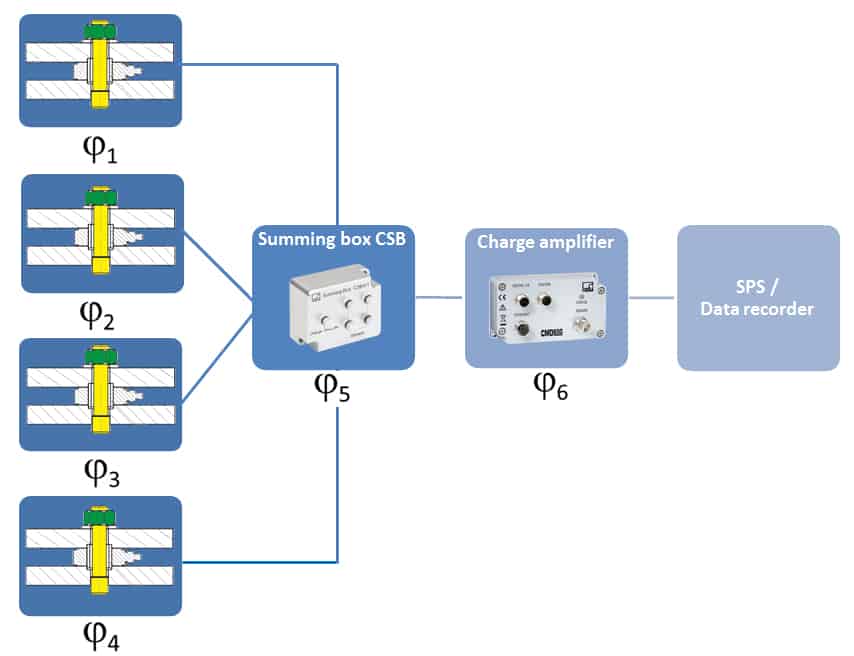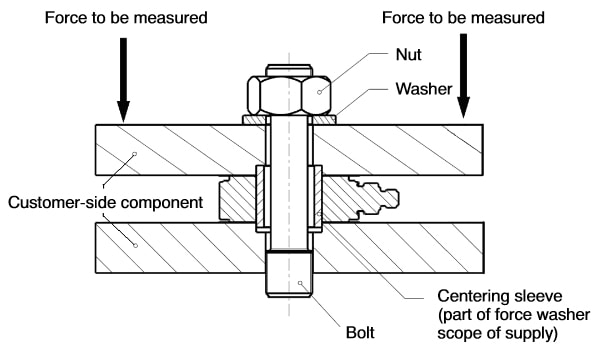A measuring chain comprises at least a charge amplifier and a sensor - this can be a calibrated transducer or a force washer (CFW, CLP) as well as a piezoelectric strain sensor (CST). Connecting the piezoelectric sensors in parallel is relatively simple using the above mentioned summing box. The cables too need to meet specific requirements. These include a very high insulation resistance, freedom from noise even under motion and mechanical strength. Special coaxial cables comply with these conditions. When mounting the sensor it is necessary to ensure that it is normally mounted onto a metal part. Hence the sensor's enclosure is also electrically connected to the object on which the force sensor is mounted.
Fig. 1 shows a measuring chain comprising four sensors connected to a charge amplifier by a summing box. The sensors are mechanically connected. Since force application parts from hardened steels are used in force measurement technology, the enclosures too have the same electric potential.

